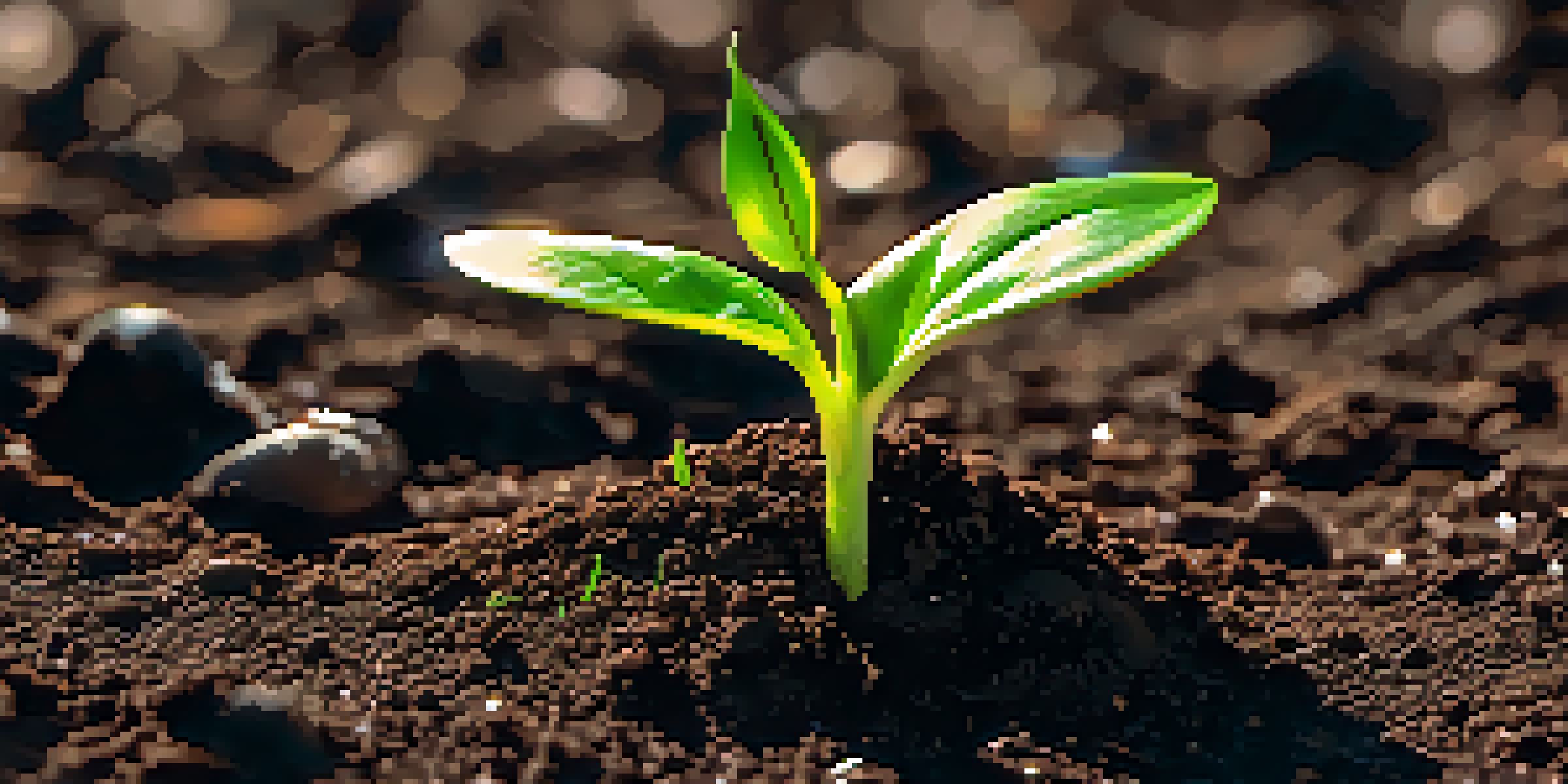Gibberellins: Key Hormones in Seed Germination and Growth

What Are Gibberellins and Their Importance?
Gibberellins are a group of plant hormones that play a crucial role in growth and development. These hormones are primarily involved in processes such as seed germination, stem elongation, and flowering. Found naturally in many plants, gibberellins help regulate various physiological activities, making them essential for healthy plant growth.
Plants are like people; they need the right conditions to thrive, and gibberellins are the catalysts that help them grow.
Think of gibberellins as the catalysts that prompt seeds to wake up and start growing. When conditions are right—like the right temperature and moisture—these hormones trigger the necessary changes that allow a seed to sprout. Without gibberellins, many plants would struggle to grow, leading to stunted development and poor yields.
Gibberellins are not just important for seeds; they also play a role throughout a plant's life cycle. From encouraging seedling growth to influencing flowering time, these hormones ensure that plants can adapt and thrive in their environments.
The Role of Gibberellins in Seed Germination
Seed germination is a complex process, and gibberellins are at the heart of it. When a seed absorbs water, gibberellins are activated, signaling the plant to begin breaking down stored food reserves. This energy is essential for the seedling as it pushes through the soil and reaches for sunlight.

Imagine a seed as a tiny package filled with everything it needs to start growing. Gibberellins help open that package, allowing the seedling to access its food and energy. Without these hormones, many seeds would remain dormant, unable to sprout even under ideal conditions.
Gibberellins Drive Plant Growth
Gibberellins are essential hormones that promote seed germination, stem elongation, and flowering, ensuring healthy plant development.
Studies have shown that applying gibberellins can significantly enhance germination rates in certain species. This application can be particularly beneficial for farmers and gardeners looking to improve crop yields and ensure robust growth.
Gibberellins and Stem Elongation
One of the fascinating effects of gibberellins is their ability to promote stem elongation. This means that when a plant is exposed to gibberellins, it can grow taller and more robust, reaching towards sunlight. This height advantage can be critical for competition among plants.
Understanding plant hormones like gibberellins is essential for optimizing agricultural practices and ensuring sustainable growth.
Picture a sunflower stretching toward the sun. Gibberellins are responsible for that impressive height, allowing the plant to outgrow its neighbors. This growth not only improves access to light but also enhances the chances of pollination and seed production.
However, too much gibberellin can lead to excessive elongation, making plants weak and susceptible to damage. This is why the balance of these hormones is crucial for optimal plant health and development.
Influence of Gibberellins on Flowering
Gibberellins also play a vital role in the flowering process of many plants. They can trigger the transition from vegetative growth to flowering, which is essential for reproduction. Different plants respond to gibberellins at different stages, showcasing the hormone's versatility.
Consider how some plants only flower after a specific period of growth or under certain environmental conditions. Gibberellins help regulate these transitions, ensuring that flowering occurs at the right time for successful pollination and seed set.
Agricultural Benefits of Gibberellins
Farmers use gibberellins to enhance germination rates, fruit size, and control flowering times, optimizing crop yields and quality.
In some agricultural practices, gibberellins are applied to manipulate flowering times, allowing farmers to optimize harvests. This strategic use of hormones can lead to better yields and more efficient crop management.
The Discovery and History of Gibberellins
The journey of gibberellins began in the early 20th century, when researchers discovered that certain fungi produced substances that promoted plant growth. This led to the identification of gibberellins as key hormones in plant biology. Understanding their role has transformed agricultural practices over the decades.
Initially, gibberellins were isolated from a fungus, but advancements in science have allowed for their synthetic production. This means that farmers can now apply these hormones more readily to enhance crop growth and yield, making agriculture more efficient.
The ongoing research into gibberellins continues to uncover new applications and benefits, showcasing the importance of these hormones in modern agriculture and horticulture.
Gibberellins in Agriculture and Horticulture
Gibberellins have practical applications in both agriculture and horticulture. Farmers often use gibberellin treatments to improve germination rates, enhance fruit size, and control flowering times. This hormone's versatility makes it a valuable tool in crop management.
For instance, in grape cultivation, gibberellins are used to promote larger fruit sizes and improve overall yield. This application not only benefits farmers but also enhances the quality of produce for consumers.
Challenges with Gibberellin Use
While beneficial, over-application of gibberellins can weaken plants, highlighting the need for careful management and understanding of plant responses.
Moreover, horticulturists use gibberellins to manipulate growth patterns in ornamental plants. This can lead to more attractive and robust plants for gardens, landscapes, and indoor settings, making gibberellins a key component in the green industry.
Potential Challenges and Considerations
While gibberellins offer numerous benefits, there are challenges to consider. Over-application of these hormones can lead to excessive growth, making plants weak and susceptible to disease. Therefore, it's essential to use gibberellins judiciously to strike the right balance.
Additionally, not all plants respond the same way to gibberellins. Some species may require specific concentrations or timing for optimal results. Understanding these variables is crucial for successful application in both agricultural and horticultural settings.

As researchers continue to explore the complexities of gibberellins, they aim to refine their use and enhance their effectiveness. This ongoing work will help ensure that these vital hormones contribute positively to sustainable farming and gardening practices.